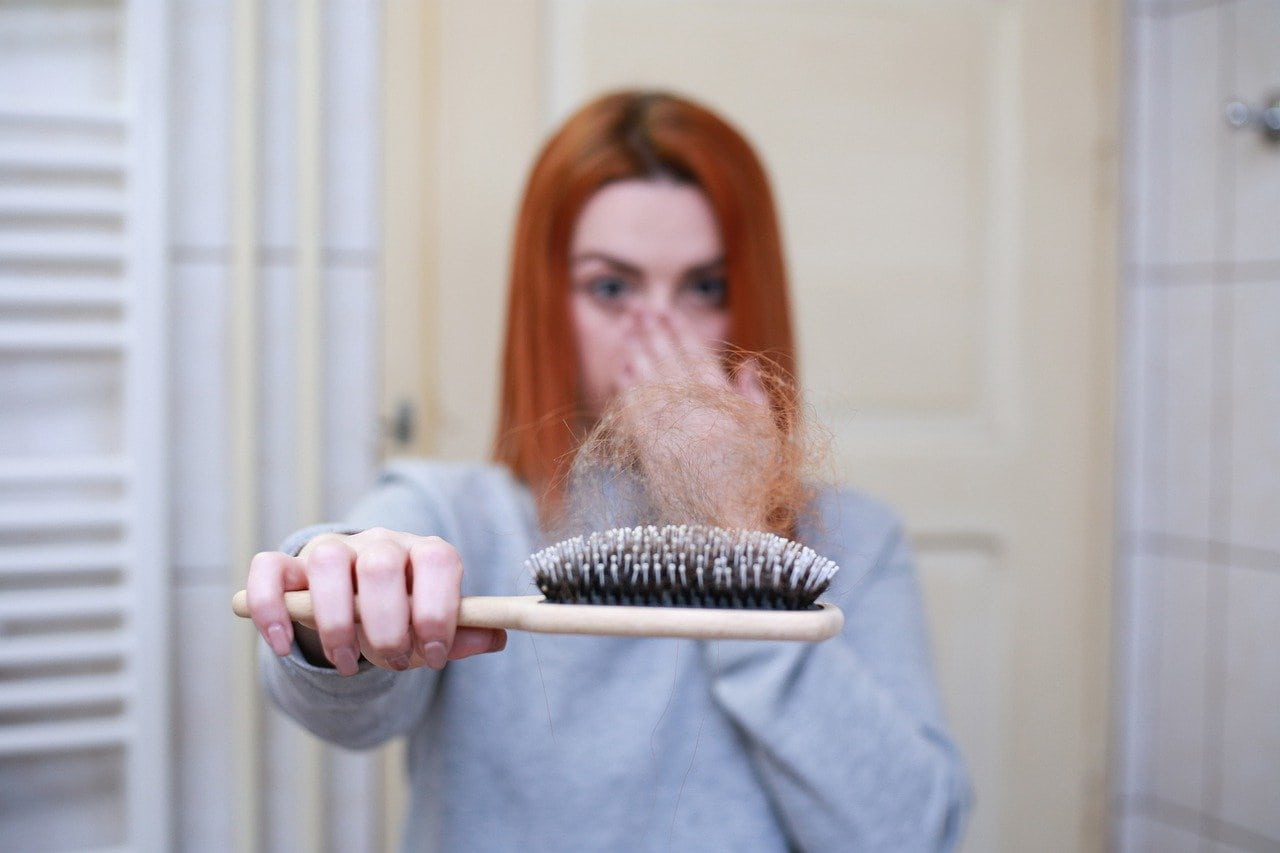
Overview
Hair loss can affect your entire body, or just your scalp. It can be the result of hormonal changes, heredity, medications, or medical conditions. It is more common in men, but anyone can experience hair loss.
Baldness refers to excessive hair loss from the scalp. Hereditary hair loss that comes with age is the most common reason for baldness. Some people prefer to let their hair loss remain untreated or unhidden, others may cover it up with makeup, hairstyles, scarves, or hats. Others may choose a treatment to regain growth and prevent further hair loss.
Before pursuing hair loss medication, talk to your doctor about the reason for your hair loss and your treatment options.
Symptoms
Hair loss can appear in many different ways, depending on what the root cause is. It can happen gradually or come on suddenly and affect the scalp or the whole body. Some forms of hair loss are temporary, while others are permanent.
Signs and symptoms of hair loss can include:
- Gradual thinning on the scalp. This is the most common kind of hair loss. It affects everyone as they age. Men will see a receding hairline, while women will lose hair from their part first.
- Circular or patchy bald spots. Some people experience coin-sized, smooth, bald spots. This kind of hair loss is usually just on the scalp, but can also appear in eyebrows or beards. Sometimes your skin may become painful or itchy before your hair falls out.
- Sudden loosening of hair. An emotional of physical shock can cause hair to loosen. Handfuls of hair may shed while combing or washing your hair, or after gentle tugging. This kind of hair loss usually causes overall thinning, not bald patches.
- Full-body hair loss. Some medical treatments and conditions, such as chemotherapy, can result in bodily hair loss. The hair will usually grow back.
- Patches of scaling that spread over scalp. This is a sure sign of ringworm. It can be accompanied by broken hair, swelling, oozing, and redness.
Causes
In general, people lose around 100 hairs a day. Usually, this doesn’t cause noticeable thinning of scalp hair as new hair grows in at the same time. Hair loss occurs when the cycle of growth and shedding is disrupted, or when the air follicle is destroyed and replaced with scar tissue.
Hair loss is typically related to one or more of the following factors:
- Family history (heredity). The most common reason for hair loss is a hereditary condition called male or female pattern hair loss. It generally occurs over time with aging in predictable patterns.
- Hormonal changes and medical conditions. There are a variety of conditions that can cause temporary or permanent hair loss. These include hormonal changes due to childbirth, pregnancy, menopause, and thyroid issues. Medical conditions include, scalp infections such as ringworm, alopecia areata, and trichotillomania.
- Supplements and medications. Hair loss may also be a side effect of some medications, such as those for depression, high blood pressure, arthritis, heart problems, cancer, and gout.
- Radiation therapy to the head. The hair might not grow back the same as it was previously.
- A very stressful event. Lots of people experience general thinning of the hair several months after an emotional or physical shock. This is temporary.
- Certain hairstyles and treatments. Excessive hairstyling or styles that pull your hair tight, such as cornrows or pigtails, can cause a kind of hair loss called traction alopecia. Perms and hot oil hair treatments can cause inflammation of the follicles that will lead to hair loss. If scarring occurs, hair loss can become permanent.
Diagnosis
Before you make a diagnosis, your doctor will probably give you a physical exam and ask you about your medical history and family history. They may also perform the following tests:
- Blood test. This can help uncover medical conditions that are related to hair loss.
- Pull test. Your doctor will gently pull several dozen hairs to see how many actually come out. This will help determine the stage of the process.
- Scalp biopsy. Your doctor will scrape samples from the skin or from hairs plucked from the scalp to examine the hair roots. This can help to determine if an infection is causing hair loss.
- Light microscopy. Your doctor will use an instrument to examine hairs trimmed at the base. Microscopy can help uncover possible disorders of the hair shaft.
Treatment
There are various effective treatments for hair loss. You may be able to reverse hair loss, or slow further thinning. With some conditions such as alopecia, hair could regrow without treatment within about a year.
Treatment options include: hair loss medication, or surgery to slow hair loss or promote hair growth.
Medication
If you have hair loss caused by an underlying disease, treatment for that disease will be necessary. This can include drugs to reduce inflammation and suppress your immune system like prednisone. If a medication is causing the hair loss, your doctor may advise you to stop using it for a period of time.
Medications are available to treat pattern (hereditary) baldness. Options include:
- Minoxidil (Rogaine). This over-the-counter hair loss medication medication is approved for men and women. It comes as a foam or liquid that is rubbed into the scalp daily. At first, it could cause you to shed hair. New hair may be thinner and shorter than previous hair. A minimum of 6 months of treatment is required to start hair regrowth and prevent further loss. You will need to continuously apply the medication to retain benefits.
- Finasteride (Propecia). This is a prescription hair loss medication used by men. You take it as a pill on a daily basis. Many men who take finasteride experience slowing of hair loss, and some may show new hair growth. To retain benefits you need to keep taking it. Propecia may not work as effectively for men over 60.
- Other medications. Dutasteride is another option for men. For women, spironolactone or oral contraceptives are other options for hair loss medication..
Hair transplant surgery
In the most commonly occurring kind of permanent hair loss, only the top of the head gets affected. A hair transplant surgery or hair restoration surgery can make the most of the remaining hair.
During a hair transplant surgery, a cosmetic surgeon or dermatologist removes tiny patches of skin containing one to several hairs from the side or back of your scalp. Sometimes a larger strip of skin with multiple hair groupings gets taken. They then implant the hair follicle by follicle into balding sections. Some doctors recommend using minoxidil after the transplant. This helps minimize hair loss. You may need multiple surgeries to get the desired effect. Despite surgery hereditary hair loss will eventually progress.
Surgical procedures for the treatment of baldness are painful and expensive. They also incur the risk of scarring or bleeding.
Laser therapy
The FDA has approved a low-level laser as a hereditary hair loss treatment. A few small studies show that it improves density. More studies are needed to show the long-term effects.


